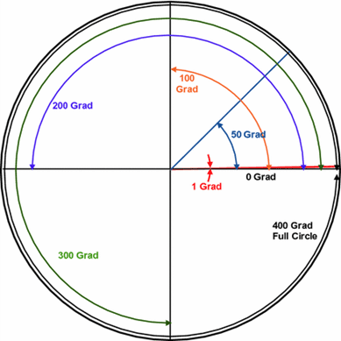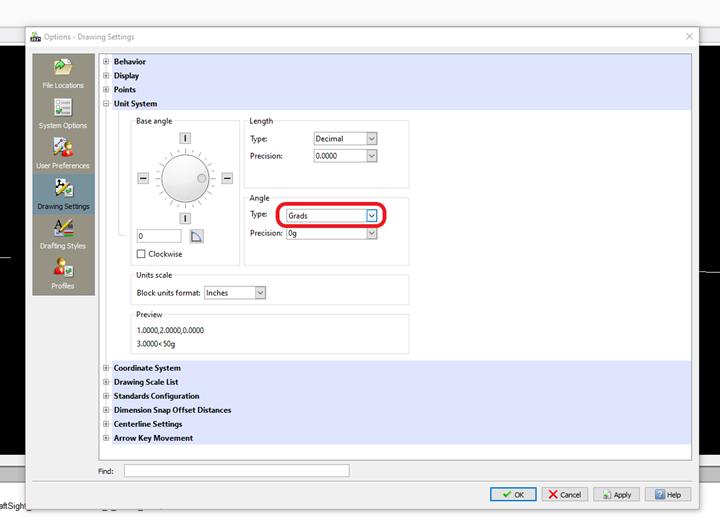The Versatility of using Gradians in DraftSight
In this article, we will explore the advantages of using grads in DraftSight, emphasizing its ease of use and its relevant use cases.
When it comes to design software, precision and ease of use are paramount. DraftSight offers designers a range of angular measurement units, including degrees, radians (rads), and grads. While degrees are the most commonly used unit, there are compelling reasons why designers might choose to use grads instead.
The Grads Advantage
Simplicity and Ease of Conversion:
Grads, also known as gradians, provide a simpler and more intuitive angular measurement system compared to degrees and radians. Unlike degrees (360°) and radians (2π), grads use a scale of 400, where a full circle is divided into 400 equal parts. This makes conversion between grads and other units a breeze, as 100 grads are equal to 90 degrees or π/2 radians. The simplicity of this conversion allows designers to communicate angles quickly and accurately without the need for complex calculations.

Mathematical Precision:
Grads offer enhanced mathematical precision when working with circles and arcs. With 400 units in a full circle, each grad represents a smaller angular measurement compared to degrees or radians. This finer granularity allows designers to achieve more accurate and precise results when working on intricate designs or when dealing with small angles. Whether designing mechanical parts, architectural layouts, or geometric shapes, grads enable designers to achieve the desired level of precision without compromise.
Simplified Trigonometry:
DraftSight, like many CAD software applications, relies heavily on trigonometry for precise design. Grads provide an advantage in trigonometric calculations by eliminating the need for complex multiplication factors. Unlike degrees, where trigonometric functions use π/180 as a conversion factor, grads work on a simple scale of 400. This simplifies calculations and reduces the likelihood of errors, resulting in a more efficient design process.
Where to find it

1. Type “UNITSYSTEM” into your Command Window.
2. Select the drop-down menu under Angle > Type.
3. Select the option, “Grads”.
Use Cases for Grads in DraftSight
Engineering and Manufacturing:
Precise measurements are crucial for optimal performance and fit in engineering and manufacturing. Grads can be especially useful when designing mechanical components, as they allow engineers to work with tight tolerances and accurately represent complex angles. From gear mechanisms to machine parts, using grads in DraftSight enables engineers to achieve the highest level of precision in their designs.
Architecture and Interior Design:
Architects and interior designers often work with intricate floor plans and building layouts. Grads can simplify the process of creating and aligning angles within these designs, ensuring that lines and structures are accurately positioned. The enhanced precision provided by grads facilitates the creation of detailed blueprints and enables architects to effectively communicate their design intentions.
Graphic Design and Typography:
In graphic design and typography, precise angles and alignment play a significant role in creating visually appealing designs. Grads provide graphic designers with a more granular unit of measurement, making it easier to align text, shapes, and graphics with precision. This finer control allows designers to achieve optimal symmetry and balance in their layouts.
In conclusion, while degrees and radians are widely used in various fields, the advantages of using grads in DraftSight cannot be overlooked. The simplicity of conversion, enhanced mathematical precision, and simplified trigonometry make grads an attractive choice for designers seeking accuracy, efficiency, and ease of use. Whether working on engineering projects, architectural designs, or graphic layouts, the use of grads in DraftSight empowers designers to create with greater precision and achieve their desired results.
Date: 06 June 2023
